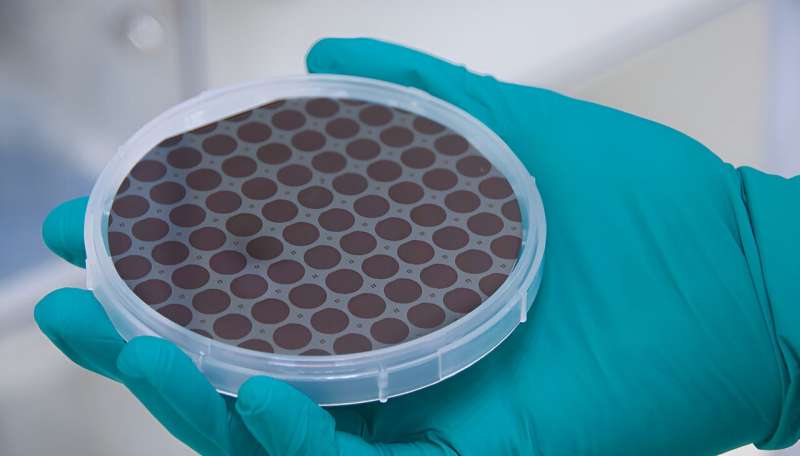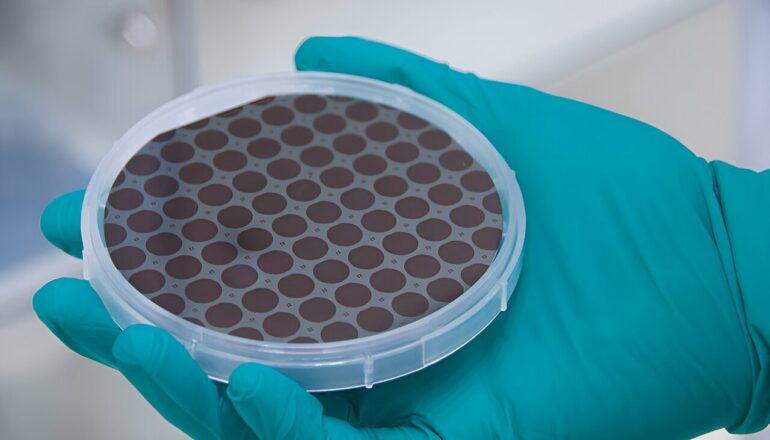An international team of researchers from Austria, the United States and Switzerland have created the first supermirrors in the mid-infrared range. These mirrors are a key technology for many applications, such as optical spectroscopy of greenhouse gases or industrial lasers for cutting and welding. The results were recently published in Nature Communications .
In the field of high-performance mirrors, everyone is chasing the impossible: coatings with perfect reflectivity. In the visible wavelength range (wavelengths between 380 nm and 700 nm), advanced metal mirrors achieve a reflectivity of up to 99%, meaning one photon is lost for every 99 reflected photons. That may seem like a lot, but in the near-infrared range (between around 780 nm and 2.5 μm), specialized mirror coatings have already achieved reflectivity of 99.9997%. This means that out of 1 million reflected photons, only three are lost.
There has long been a desire to extend this supermirror technology to the mid-infrared (wavelengths from 2.5 µm to 10 µm and beyond). This would allow significant progress in many areas—for example, when measuring trace gases that are related to climate change, but also when analyzing biofuels. In addition, many industrial and medical applications could be improved, such as cutting lasers and laser scalpels. So far, however, the best mid-infrared mirrors lose one in 10,000 photons, about 33 times worse than near-infrared supermirrors.
In the recently published study, an international team of scientists has now created the first supermirrors in the mid-infrared. Under the leadership of the Christian Doppler Laboratory for Mid-Infrared Spectroscopy and Semiconductor Optics (CDL Mid-IR) at the University of Vienna and the industrial partner Thorlabs Crystalline Solutions (Santa Barbara, California), the researchers were able to create mirrors that only lose eight out of 1 million photons. This means that these super mirrors achieve a reflectivity of 99.99923%. In order to achieve this record, the researchers had to precisely analyze and control the materials, the mirror design and the manufacturing process.

The highly reflective crystalline semiconductor structures. These are first grown on 10 cm gallium arsenide wafers and divided into smaller, round mirrors. Each of these round disks is then bonded to a prepared substrate to create a finished supermirror. © Georg Winkler
New coating process developed
First, the researchers had to develop a new coating process. They combined conventional thin-film coating techniques with novel semiconductor materials and methods. This made it possible to overcome the material limitations in the difficult mid-infrared region. Oliver H. Heckl, head of the CDL Mid-IR at the University of Vienna, said, “This breakthrough shows the enormous potential in successful collaboration between innovative basic research and needs-oriented product development.”
Garrett Cole, Technology Manager at Thorlabs Crystalline Solutions (TCS), explains, “This work builds on our pioneering work in substrate-transferred crystalline coatings.”
However, manufacturing was only part of the challenge. The scientists also had to measure the mirrors precisely in order to prove their performance beyond any doubt. That was the main task of the two first authors, Gar-Wing Truong from TCS and Lukas Perner from the University of Vienna, who say, “As co-inventors of this novel form of coating, it was exciting to put these mirrors through their paces and thus confirm their outstanding performance.”
An immediate application of these novel supermirrors is to significantly improve the sensitivity of optical devices for gas analysis in the mid-infrared. These devices can detect and accurately quantify tiny amounts of important environmental markers, such as carbon monoxide.
To demonstrate these possibilities, the team brought in experts from the National Institute of Standards and Technology (NIST). They confirmed the decisive advantage for ultrasensitive spectroscopy in the mid-IR spectral range, including the measurement of radioisotopes that are important for nuclear forensics and carbon dating.
More information:
Gar-Wing Truong et al, Mid-infrared supermirrors with finesse exceeding 400,000, Nature Communications (2023). DOI: 10.1038/s41467-023-43367-z
Provided by
University of Vienna
Citation:
Researchers create first supermirrors in mid-infrared range (2023, December 6)



